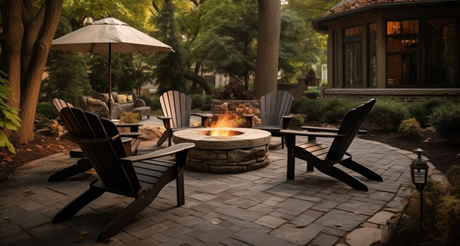Embracing Sustainable Design: Green Building Trends in Commercial Real Estate | Guest Post
In all walks of life, the trend toward greater sustainability is at the forefront as society scrambles to reduce the debilitating effects of climate change. This definitely applies to the commercial real estate sector, where tightening government regulations and increased consumer conscientiousness have buildings under the sustainability microscope. To help assess the “green factor” of your commercial buildings, keep reading for some of the most prominent sustainable building trends in 2023.
Open Interiors
Open floor plans provide a number of benefits in terms of sustainability, including increased natural light and ventilation, improved collaboration and communication and greater flexibility to adapt to changing needs.
One key element of open interiors is the use of demountable wall partitions. These systems allow for the quick and easy reconfiguration of interior spaces, without the need for costly and time-consuming construction. This flexibility is essential for businesses that are constantly evolving and adapting.
Demountable wall partitions are also a sustainable choice, as they are typically made from recycled or renewable materials and can be reused multiple times.
Increased Window Area
There are numerous energy efficiency benefits of commercial buildings with ample window area. Incorporating more glass into the design of a building can help reduce the amount of energy needed for artificial lighting, as natural light can be used to illuminate the space during the day. This can significantly reduce energy costs, which are a major expense for commercial buildings.
Furthermore, increasing window area can also help improve air quality and circulation, as natural ventilation can reduce the need for mechanical ventilation systems. This can lead to improved indoor air quality, which can have a positive impact on occupant health and productivity.
Finally, windows with high-performance glass can help to insulate buildings, reducing the need for heating and cooling. This can lead to significant cost savings for businesses while also reducing carbon emissions.
Vertical Space Utilization
Vertical space utilization is emerging as a prominent trend in commercial design. This innovative approach involves optimizing the use of vertical space to maximize available floor area, resulting in several benefits for businesses.
Using mezzanines to create additional office space is one popular method for capitalizing on vertical space. Glass railing systems are a popular choice for securing mezzanines for several reasons. First and foremost, they provide a safe and secure barrier to prevent falls and accidents. The transparent nature of a glass railing system also allows for maximum natural light penetration, enhancing the overall brightness and ambience of the space. This not only creates a more productive work environment but can also reduce energy consumption by decreasing the need for artificial lighting.
Designing for Durability
Building with durable features is one of the essential trends in green commercial building design. Durable materials can last longer, reducing the need for frequent repairs and replacements. This saves both money and resources.
Some popular durable features for commercial buildings include:
- High-quality roofing materials - a durable roof can last for decades, protecting the building from the elements and reducing the need for repairs. Metal roofs are becoming very popular for commercial structures for just these reasons.
- Durable flooring - durable flooring materials, such as epoxy terrazzo and polished concrete, can withstand heavy foot and machine traffic and last many years.
- Low-maintenance landscaping - drought-resistant plants and efficient irrigation systems can help to reduce the need for water and maintenance in a commercial building’s exterior.
Durable features can also increase the value of a commercial property. Potential buyers will appreciate the fact that they won't have to worry about costly repairs or replacements. By incorporating durable features into your commercial building, you can create a more sustainable, valuable asset.
More Functional Exterior Space
Creating functional exterior spaces can significantly contribute to the sustainability of buildings by offering several environmental benefits:
- Reduced energy consumption - outdoor areas can help reduce energy consumption by providing shade and regulating indoor temperatures. Trees and other vegetation can block sunlight during the summer, reducing the need for air conditioning. Outdoor spaces can also help insulate buildings during colder months, reducing the need for heating.
- Improved air quality - vegetation in outdoor areas can help improve air quality by absorbing pollutants and releasing oxygen. This can contribute to a healthier indoor environment and reduce the risk of respiratory problems for building occupants.
- Water management - outdoor spaces can help manage stormwater runoff and prevent it from overloading sewer systems. Permeable paving materials and rain gardens can be used to collect and filter rainwater, reducing the risk of flooding and pollution of local water bodies.
An important consideration when designing functional exterior space is the choice of paving materials for creating patios and rooftop decks. A common comparison is porcelain vs concrete pavers, and each has its own advantages and disadvantages. Concrete is durable and relatively inexpensive; porcelain is a more sustainable and long-lasting option. Porcelain pavers are made from recycled materials, and they are resistant to fading, cracking, and staining. They also require less maintenance than concrete pavers, making them more environmentally friendly.
The Hottest Green Building Trends in Commercial Real Estate
The commercial real estate industry is at the forefront of the sustainability movement, and it is critical that your building does not get left behind. For more information on green building trends in the Denver area, explore the resources at the Denver Metro Association of Realtors® for the latest in the market.
Rachel Tolander is a freelance writer that loves sharing her knowledge and experience in residential remodeling, construction, and safety. She lives in a small town North of Austin, Texas where she spends her free time cheering on her son at his ball games and spending time with her family. Rachel’s work as a freelance writer can be found on Building Product Advisor, a construction industry resource site.



